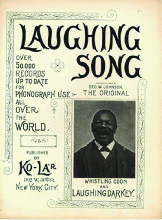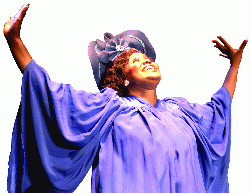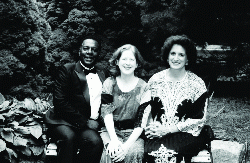The Evolution Of Music Part-II
Music - The Evolution Of Music Part - II
 Categorising music and breaking it down into genres and sub – genres on a global scale is one hell of a daunting task. Keeping that in mind, we have focused on the music of the United States of America which has often been termed as a melting pot of diverse styles of music. This, one has to attribute to large scale immigration and slavery. This brought a lot of musical styles into direct contact with each other, resulting in a lot of fusion and hybridization of the pre existing styles. Elements of foreign music arrived in the United States both through
Categorising music and breaking it down into genres and sub – genres on a global scale is one hell of a daunting task. Keeping that in mind, we have focused on the music of the United States of America which has often been termed as a melting pot of diverse styles of music. This, one has to attribute to large scale immigration and slavery. This brought a lot of musical styles into direct contact with each other, resulting in a lot of fusion and hybridization of the pre existing styles. Elements of foreign music arrived in the United States both through
formal sponsorship of educational and outreach events and also through an informal process as the incidental transplantation of West African music through slavery and Irish music through immigration. Thus the most distinctly American genres of music are a result of cross – cultural hybridization through close contact.Folk music in the United States is as diverse as the ethnic groups residing there. During the colonial era, English, French and Spanish styles and instruments were brought to the Americas. By the early 20th century, the United States had become a major centre for folk music from around the world, including Polka, Ukranian and Polish fiddling, Ashkenazi Jewish klezmer and several kinds of Latin music. The thirteen colonies of the original United States were all former English possessions, and the Anglo culture became a major foundation for American folk and popular music. Many American folk songs are identical to British songs in arrangement, but with new lyrics, often as parodies of the original material.
 The ancestors of Today’s African American population were brought to the United States as slaves, working primarily in the plantations of the South. They were from hundreds of tribes across West Africa, and they brought with them certain traits of West African music. The first slaves in the United States sang work songs, field hollers and, following Christianization, hymns. In the 9th century, a Great Awakening of religious fervor gripped people across the country, especially in the South. Protestant hymns written mostly by New England preachers became a feature of camp meetings held among devout Christians across the South. When blacks began singing adapted versions of these hymns, they were called Negro spirituals. It was from these roots of spiritual songs, work songs and field hollers, that blues, jazz and gospel developed.
The ancestors of Today’s African American population were brought to the United States as slaves, working primarily in the plantations of the South. They were from hundreds of tribes across West Africa, and they brought with them certain traits of West African music. The first slaves in the United States sang work songs, field hollers and, following Christianization, hymns. In the 9th century, a Great Awakening of religious fervor gripped people across the country, especially in the South. Protestant hymns written mostly by New England preachers became a feature of camp meetings held among devout Christians across the South. When blacks began singing adapted versions of these hymns, they were called Negro spirituals. It was from these roots of spiritual songs, work songs and field hollers, that blues, jazz and gospel developed.
Spirituals were primarily expressions of religious faith, sung by slaves on Southern plantations. In the mid to late 19th century, spirituals spread out of the South. In 1871 Fisk University became home to the Jubilee Singers, a pioneering group that popularized spirituals across the country. In imitation of this group, gospel quartets arose, followed by increasing diversification with the early 20th century rise of jackleg and singing preachers, from whence comes the popular style of gospel music.
 Blues is a combination of African work songs, field hollers and shouts. It developed in the rural South in the first decade of the 20th century.
Blues is a combination of African work songs, field hollers and shouts. It developed in the rural South in the first decade of the 20th century.
The popularity of blues music among the blacks marked a unique period in the history of secular African American song. Prior songs consisted of field hollers which served as a means of communication among plantation workers, and work songs which were used by the slaves to keep time with a task. Despite the blues uniqueness from hollers and songs, it was forged from the same musical repertory and traditions. Blues music reflected the new status of blacks. Through the blues, there was a sense of freedom and expression which was a whole new world for these oppressed and subjugated people.
 The first recording of the blues was in 1895. George W Johnson’s ‘Laughing Song’ was the first blues song recorded. Thereafter, blues songs began to appear in music rolls.
The first recording of the blues was in 1895. George W Johnson’s ‘Laughing Song’ was the first blues song recorded. Thereafter, blues songs began to appear in music rolls.
As folk singers migrated north in the early 20th century, they brought the blues with them. Joining them from New Orleans were “black-butt” pianists who played in honky-tonks; Texas, Louisiana, and Arkansas gave way to the “Fast Western” pianists who sang as they played, imitating the sounds of southern guitarists. Country singers joined the New Orleans and “Fast Western” pianists’ migration, and brought their style to Chicago, Detroit, Cleveland, and New York, where the classic blues singers united with these musicians and introduced their blues style in clubs, theaters, and dance halls. Classic blues singers brought a professional quality to it, and constructed the foundation for the classic blues.
The migration of many blacks to the cities gave them a new freedom from the church and community, a freedom that was absent in the rural areas from whence they came. People started performing the blues in theatres, clubs, dance halls and vaudeville shows. The blues entered the forefront in 1920 when Mamie Smith’s recording of ‘Crazy Blues’ became popular and opened the doors to other classical blues singers. The record was priced at 1 dollar and sold 75,000 copies in the first month of release. As a result of Mamie Smith’s success, record companies saw a new market and an opportunity to make a lot of money from it. They began a searched for talented blues artists and this resulted in the later discovery of such greats as Bessie Smith, Ma Rainey, Alberta Hunter, Ethel Waters and many more.
Today, blues is recognised for its influence on other genres of music such as rock and roll, rhythm and blues and rap.



